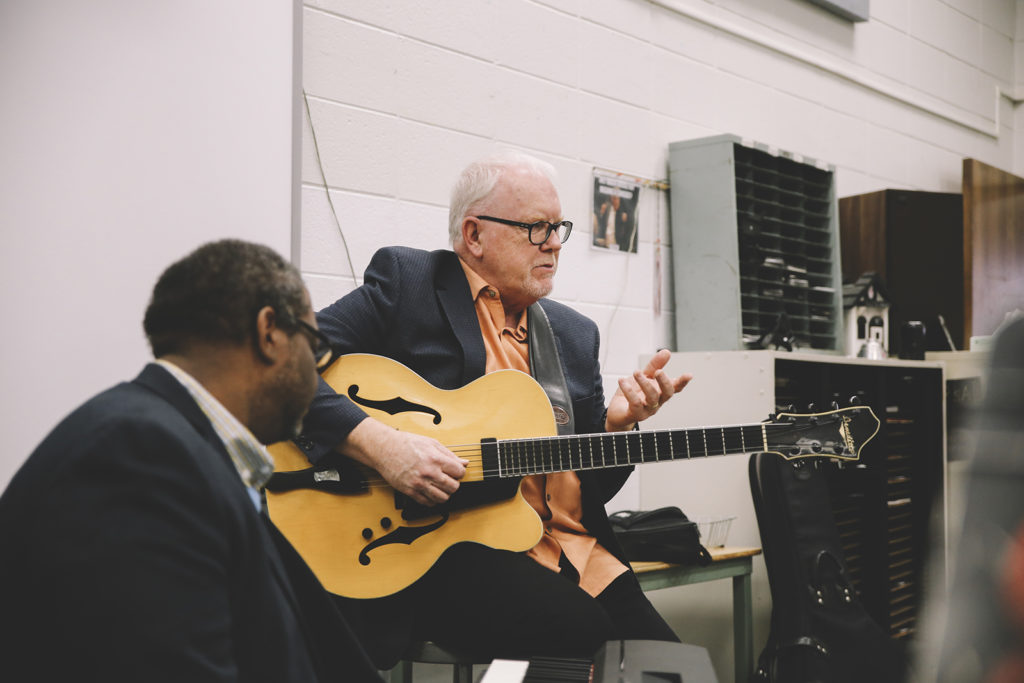When Music and School Grew Apart
- Share
- Tweet
- Pin
- Share

When the U.S. Department of Education (DOE) funded a study on the state of arts education in public schools in 2010, the first study in 10 years, the outlook wasn’t at a crisis level, but it was trending the wrong way for music lovers.
While a great portion of public schools, 94 percent, offer specific music education courses and programs, the study found a growing disparity in the participation and effect of those programs.
Smaller secondary schools, or those with fewer than 500 students, had music programming in just 81 percent of districts while larger schools had music programming in 98 percent of districts. While those are passing grades, the DOE’s estimates still put 2.1 million students without access to any kind of music education.
It’s not just small schools that are seeing a dip in music education, but also high-poverty districts. While 100 percent of high-poverty schools still offered music education in the 1990s, that number fell to 81 percent in the 2009-10 school year. The perception is that when budgets get stressed, the arts are the first to go.
But that perception was exacerbated by the passage of No Child Left Behind in 2001. The act held schools accountable for increasing reading and math proficiency while facing sanctions if the school failed. Schools were quick to promote more math, science and reading curricula at the expense of the arts.

Artists in the Schools began in 2002 as a way for Birch Creek and its faculty to give back to their community. This program allows nationally-acclaimed faculty to return to Door County each year and serve as clinicians for local public school music students. (Above) Guitarist Rick Haydon tells Sevastopol students, “The blues is playing somewhere in between the notes.” Submitted.
“Some of these programs are adding on to the start of the day or at the end of the day, they’re not even built into the school day,” said Mona Christensen, Executive Director for Birch Creek Music Performance Center. “For some kids, it’s the arts that keep kids in school. It’s that creative edge they need to be able to deal with math or science.”
A longitudinal study commissioned by the National Endowment for the Arts in 2012 also detailed the success of low socioeconomic status students when they are involved in arts programs. Arts programs can narrow achievement gaps and even make students more likely to vote when they are older.
The National Association for Music Education has also found that teaching music in schools helps students develop language and reasoning, memory, coordination and increased SAT scores.
“Music is very close to math, it’s very structured,” said Christensen. “They’re not only skilled in muscle memory but these are smart kids who are skilled at a lot of other things.”
Schools are still navigating the changes that were implemented following the No Child Left Behind Act. The shift toward sciences also created the advent of block scheduling where students spent time in only three or four subjects each day for longer periods of time.
“There are very few schools that are doing well with music if they are using block scheduling the way it was designed,” said Christensen. “It would be like learning a foreign language and you meet once every four days for three hours. That’s not how you learn language.”
But it is not all doom and gloom. California is expected to bring on 100,000 new music instructors in its schools over the next several years. Meanwhile, technology’s place in the classroom has extended to the band room. Students are able to easily record and hear what they are playing while creating pieces of their own. Music educators have also begun incorporating more popular music within the traditional curriculum to keep students more involved.



